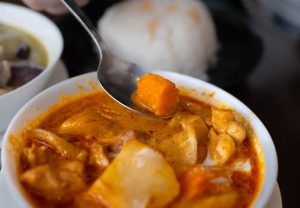Onions caramelize for savory homemade dishes
Onions are a staple in almost every kitchen and play a crucial role in many savory homemade dishes. They add a deep and flavorful base to soups, sauces, and stews, and can even take center stage as a caramelized topping on pizza or burgers. But have you ever wondered how to properly caramelize onions to bring out their full flavor potential? In this article, we’ll dive into the art of caramelizing onions, from the science behind it to tips and tricks for achieving the perfect golden-brown color and sweet, savory flavor.
The Science Behind Caramelizing Onions
If you’ve ever caramelized onions before, you know that it takes time and patience. But have you ever wondered why? The process of caramelizing onions involves breaking down the natural sugars in the onion through a method called the Maillard reaction. This chemical reaction occurs when the amino acids and reducing sugars in the onion react at high heat, producing a unique flavor and color that make caramelized onions so delicious.
To achieve this reaction, a low and slow cooking method is essential. High heat can cause the onions to burn before the sugars have a chance to caramelize. That’s why many recipes call for caramelizing onions over medium-low heat for anywhere from 30 minutes to an hour or more.
How to Caramelize Onions
Step 1: Choose the Right Onions
Not all onions are created equal when it comes to caramelizing. Sweet onions, such as Vidalia or Walla Walla, are the best choice for this process as they naturally have a higher sugar content. However, if sweet onions aren’t available, you can use any yellow or white onion.
Step 2: Prep the Onions
Start by peeling and thinly slicing the onions. The slices should be consistent in size for even cooking. You can do this by hand or use a mandoline or food processor for quicker results. Make sure to remove the root and stem ends of the onion before slicing.
Step 3: Heat the Pan
To caramelize onions, you’ll need a large, heavy-bottomed pan. Add a tablespoon of oil or butter to the pan and heat it over medium-low heat until it’s hot, but not smoking. You want the onions to cook slowly without burning, so make sure the heat is not too high.
Step 4: Add the Onions
Add the sliced onions to the pan and stir to coat them in the oil or butter. Let the onions cook undisturbed for about 5 minutes, then stir and spread them into an even layer again. Repeat this process every 5 minutes until the onions become soft and start to turn a light golden color.
Step 5: Lower the Heat
Once the onions have reached a light golden color, lower the heat to low, and continue to cook, stirring occasionally. You may notice some bits sticking to the bottom of the pan, but that’s normal – these are the caramelization bits that give the onions their flavor and color.
Step 6: Keep Cooking
Continue to cook the onions over low heat for another 30 minutes to an hour, stirring occasionally. As they cook, the onions will continue to caramelize and turn a deeper, richer color. You can stop whenever you reach your desired level of caramelization – some people prefer lightly caramelized onions, while others prefer a deep, dark brown color.
Step 7: Add Flavor
At this point, you can add some additional flavors to your caramelized onions, such as thyme, garlic, or balsamic vinegar. Simply add them to the pan and cook for a few more minutes until the flavors have melded together.
Tips and Tricks for Perfect Caramelized Onions
To help you achieve the perfect caramelized onions every time, here are some tips and tricks to keep in mind:
Use a large pan.
The onions will shrink as they cook, so make sure you use a large enough pan to hold them all without overcrowding. This will ensure they cook evenly.
Add a pinch of salt.
Adding a pinch of salt to your onions as they cook will help draw out their natural moisture, helping them caramelize faster.
Don’t stir too often.
While it may be tempting to constantly stir the onions, this can actually slow down the caramelization process. Let the onions sit for a few minutes between stirs to allow the Maillard reaction to occur.
Don’t add sugar.
Some recipes call for the addition of sugar to speed up the caramelization process. However, this isn’t necessary and can result in burnt onions. If you follow the low and slow method, the natural sugars in the onions will be enough to achieve the perfect caramelization.
With these tips and tricks in mind, you’re now ready to caramelize onions like a pro. So the next time you have a savory dish that calls for caramelized onions, let this article be your guide to achieving the perfect flavor and color in this delicious ingredient.











